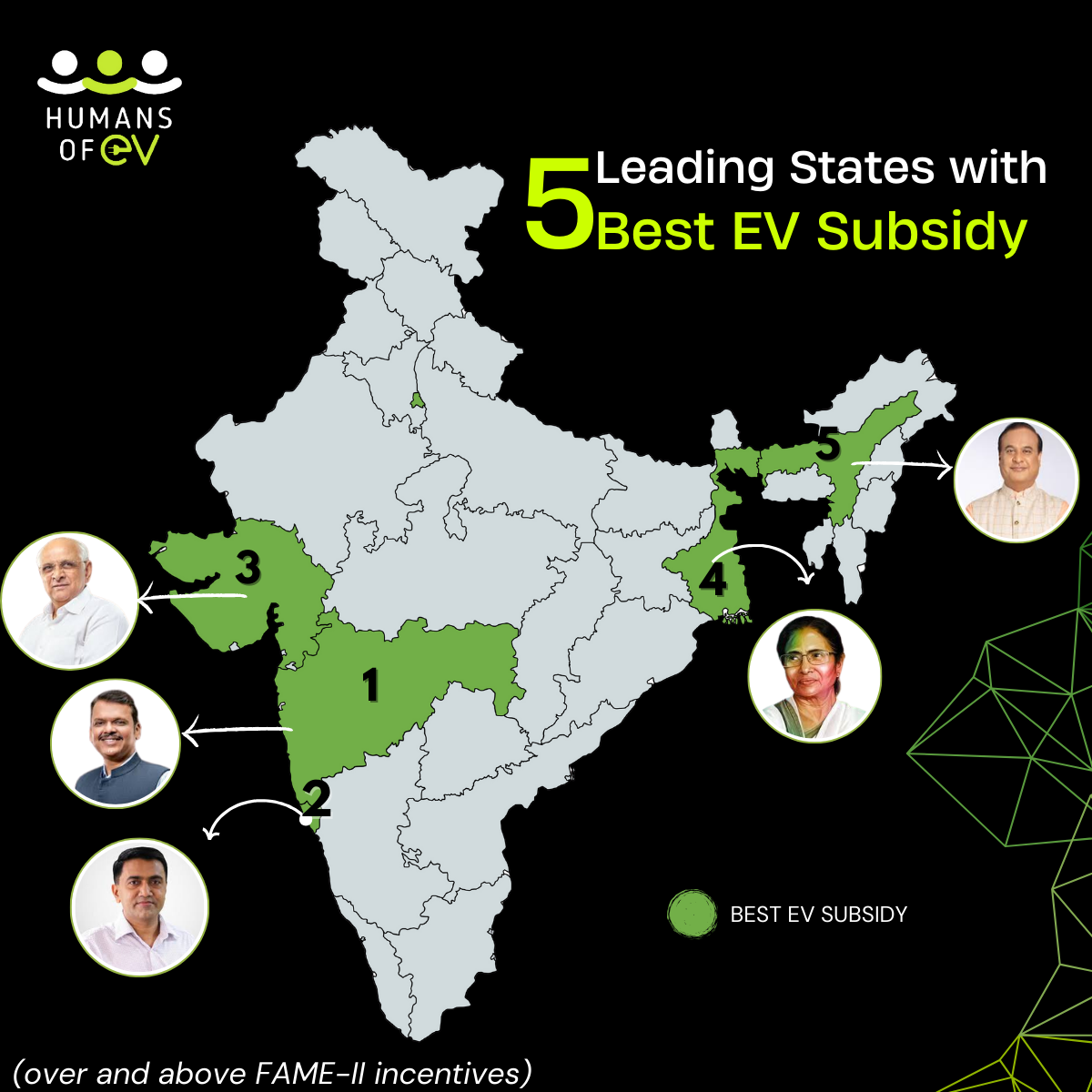
January 27th, 2025
Understanding the Need for Government Subsidies
The upfront cost of electric vehicles (EVs) is often higher than traditional internal combustion engine vehicles. Government subsidies play a critical role in reducing this price disparity, making EVs more affordable for consumers and encouraging widespread adoption.
Additionally, EVs produce zero tailpipe emissions, significantly reducing air pollution in urban areas where pollution levels are dangerously high. Promoting EVs is crucial for improving public health and mitigating environmental damage, aligning with India’s sustainability goals.
Central Government Initiatives
The central government has launched several programs to support EV manufacturing and sales. The most notable is the FAME-II Scheme (Faster Adoption and Manufacturing of Hybrid and Electric Vehicles), offering the following benefits:
- Two-Wheelers: Subsidy of ₹15,000 per kWh, capped at 40% of the vehicle’s cost.
- Four-Wheelers: Subsidy of ₹10,000 per kWh, with a maximum incentive of ₹1.5 lakhs.
These subsidies aim to lower the upfront costs, making EVs an attractive choice for buyers.
State-Level Incentives
In addition to central subsidies, several states have introduced policies to encourage EV adoption. Some states provide 100% exemptions on road tax and registration fees. These include:
- Karnataka
- Telangana
- Tamil Nadu
- Goa
- Gujarat
- Meghalaya
- Andhra Pradesh
- West Bengal
- Odisha
- Assam
- Maharashtra
- Delhi
Below is a detailed look at the top five states offering the best EV subsidies:
#1 Maharashtra
- Two-Wheelers: Subsidy of ₹10,000 plus a scrappage bonus of ₹7,000.
- Four-Wheelers: Subsidy of ₹1.5 lakhs (for vehicles priced under ₹15 lakhs ex-factory) plus a scrappage bonus of ₹25,000.
- Additional benefits: Exemption from road tax and registration fees.
#2 Goa
- Two-Wheelers: Triple subsidy of ₹30,000.
- Four-Wheelers: Subsidy of ₹1.5 lakhs.
- Additional benefits: FAME-II incentives, 100% road tax and registration fee exemptions.
#3 Gujarat
- Two-Wheelers: Subsidy of ₹20,000.
- Four-Wheelers: Subsidy of ₹1.5 lakhs.
- Additional benefits: FAME-II incentives, 100% road tax and registration fee exemptions.
#4 West Bengal
- Two-Wheelers: Subsidy of ₹20,000.
- Four-Wheelers: Subsidy of ₹1.5 lakhs.
- Additional benefits: FAME-II incentives, 100% road tax and registration fee exemptions.
#5 Assam
- Two-Wheelers: Subsidy of ₹20,000.
- Four-Wheelers: Subsidy of ₹1.5 lakhs.
- Additional benefits: FAME-II incentives, 100% road tax and registration fee exemptions.
Commercial EV Subsidies
While personal EVs benefit significantly from subsidies, commercial EVs also receive strong support. These include:
- Incentives for e-rickshaws and goods carriers.
- Subsidies for electric buses under FAME-II, aimed at reducing public transport emissions.
Challenges in EV Adoption
Despite these incentives, EV adoption faces hurdles:
- Charging Infrastructure: Limited availability of public charging stations.
- High Battery Costs: Batteries account for a significant portion of EV prices.
- Range Anxiety: Concerns about the driving range deter potential buyers.
Government subsidies are critical in addressing these challenges, particularly by supporting charging infrastructure development and reducing battery costs.
Environmental and Economic Impact
- Air Pollution Reduction: Transitioning to EVs can drastically cut emissions, improving air quality in major cities.
- Economic Savings: Reduced fuel and maintenance costs make EVs more economical in the long run.
Example: The FAME-II initiative has already supported over 2.5 lakh EVs, saving approximately 5 million liters of fuel annually and reducing carbon emissions by over 1 million tons.
Future Outlook
India’s EV market is poised for exponential growth, with projections of 30% EV penetration by 2030. States are expected to continue enhancing subsidies, while advancements in battery technology and charging infrastructure will further boost adoption.
The EV revolution in India is here. Which state’s policy inspires you the most? Share your thoughts or let us know your next EV choice. If you have questions about subsidies in your state, drop them in the comments!
Together, let’s drive towards a sustainable future—one EV at a time!



